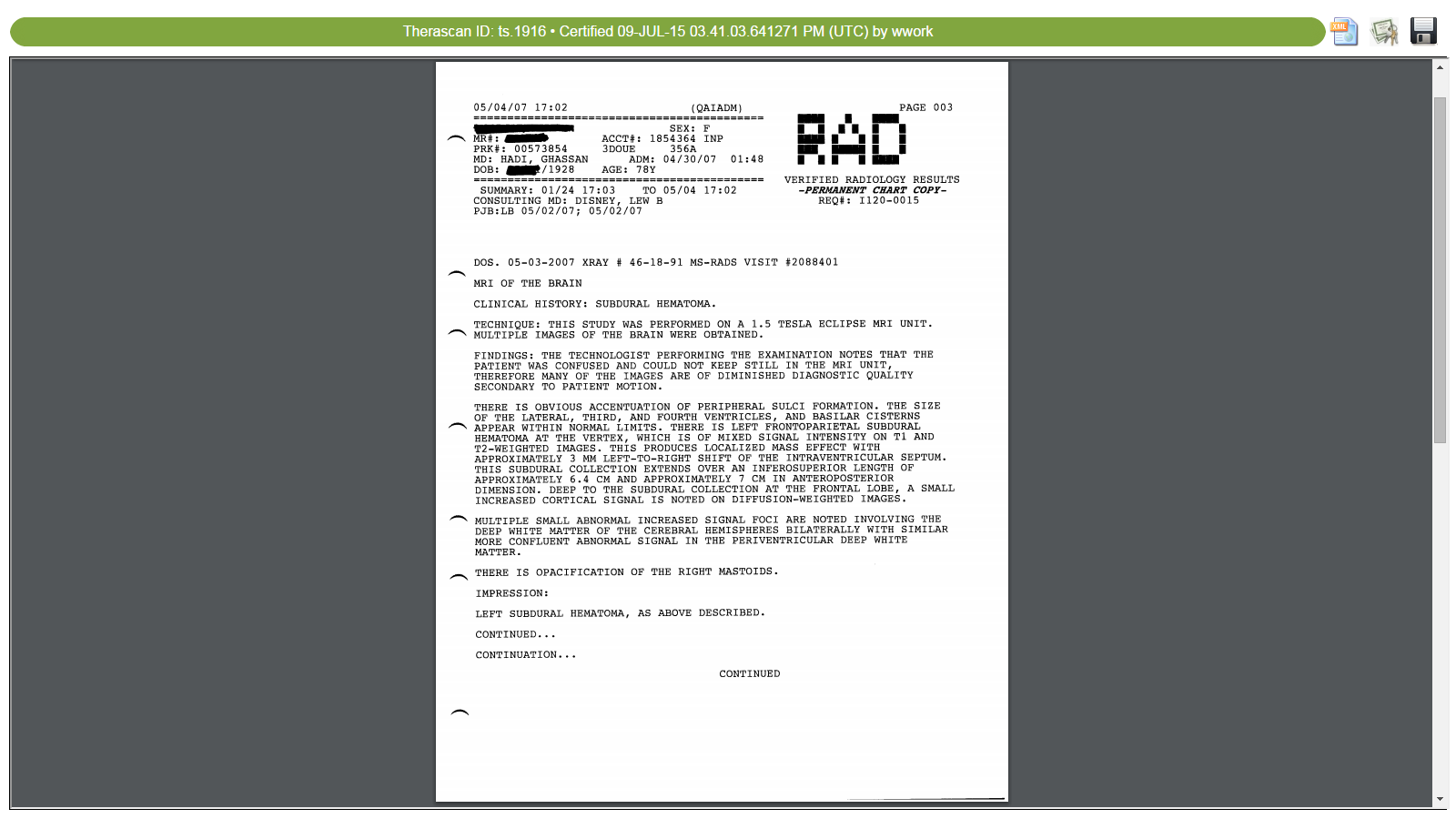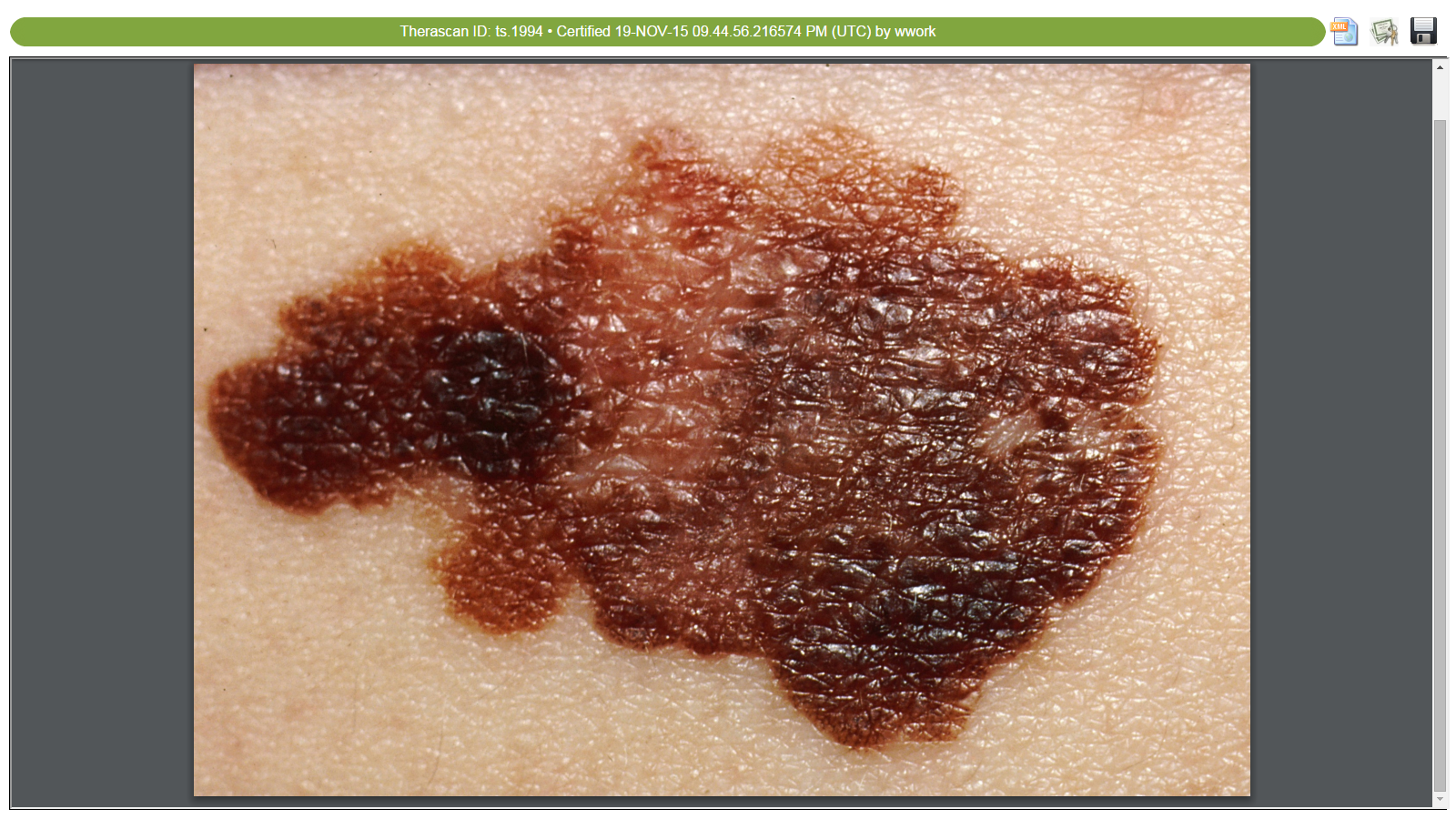Remote/Centralized: Accurate data capture is arguably the largest component of a clinical trial. Though much can be collected directly on creation, there remains a significant portion that either needs to be transcribed from original sources or entered from case report forms (CRFs). TheraScan allows the centralization of this effort providing both economies of scale by concentrating data entry personnel, and increased quality by better management and training at the data-entry location. Often data can be captures directly from the source document uploads via optical character recognition and/or text searches. Data can also be interpreted from such sources as imaging, transcriptions or or electronic health record (EHR) screen captures. Clinical site are thus relieved of much of the data entry burden leaving them more time for important clinical responsibilities.
Case Report Form

Data can be entered from case report forms at a centralized location, or can be automatically processed using optical character recognition
· · ·
A government agency was running a multi-center epidemiological study. Rather than have data entry done at the sites, the paper CRFs were scanned and uploaded to the TheraScan repository. Once loaded the images were run through a optical character recognition system to retrieve the data from the written CRF. The results were then subject to two separate reviews to confirm the accuracy of the recognition. With the system and centralized management the agency was able to greatly reduce the cost of their data collection while dramatically improving the accuracy of the results.
Radiology

Data entry personnel can extract specific information from such scanned images as radiology reports of lab reports.
· · ·
A multi-site public clinic set up a registry of patients for prospective enrollment in clinical trials. Some of the required data elements came from radiology reports. The sites would either upload a scan of the printed report, which the system then ran through an optical character recognition process (OCR) to retrieve the textual content, or upload the actual textual content to the repository. Once the text was loaded, the TheraScan system would use a text search routine to identify “high probability” sections of the report that likely held the data elements. Staff were then able to enter to data elements into the EDC system. The highlighted text made it much easier to find appropriate passages within the document thus greatly improving the speed and accuracy of the data collection effort.
Melanoma

Where interpretation has be be made by skilled professionals. Images can be securely assessed at an offsite location.
· · ·
A proof of concept was developed to centralize the analysis of malignant melanomas. Images of the melanoma were uploaded to the repository. A specialist was then able to access the images via the TheraScan system in order to make visual assessments of the melanoma. The results were entered into the EDC system, including a field that linked the record to the image.

